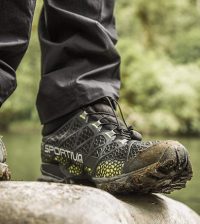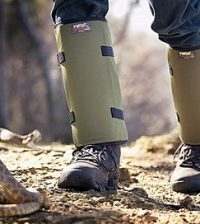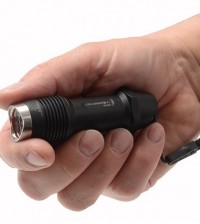How to Choose the Right Boots & Clothes for Hiking Adventures
Like any outdoor activity, hiking requires utmost preparation. Just as you would prepare for a hunting trip by bringing along some essential hunting accessories, the same goes for your hiking adventures too. And when it comes to hiking, next to water and food, the most important gear is your clothing and footwear. After all, you will be traversing a great distance on foot and in all kinds of conditions.

Things to Consider When Choosing Your Walking Boots
There are different types of shoes for different occasions, and when it comes to hiking, you need to look beyond fashion and choose functional and comfortable footwear. Select sturdy and versatile boots that are waterproof and breathable, so you can enjoy long hikes in demanding terrain conditions and harsh weather.
The boots you pick will certainly mean the difference between an enjoyable walk and an uncomfortable one. To make the right choice, there are a few things to take into account, such as the following.
Walking Location
If you’ll be walking in the hills, mountains or on uneven ground, make sure you’re wearing boots with a stiff sole and good ankle support. The stiff sole can help you stand and balance on small edges with safety, while the ankle support stabilises your foot and lower leg. Even if you’ll be moving long distances over flat ground, you should get walking boots that are supportive and flexible, so your foot can move naturally and make you feel comfortable.
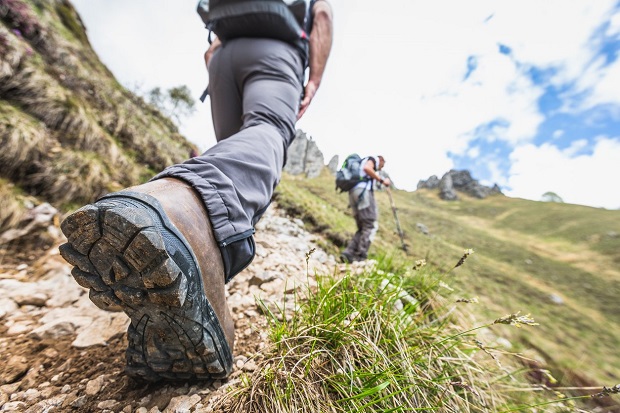
Anatomy of the Boots
The construction of the boots for walking consists of a few sections. The upper refers to everything on the outside of the boot, above the midsole. It can be made from a variety of materials, such as leather, suede or fabric, usually, mesh or polyurethane. They offer different benefits and influence the technicality of the boot in different ways. Leather is highly waterproof and durable, therefore it’s the main choice of many outdoor enthusiasts, even though it requires proper care and attention.
The midsole is a layer of material between the inner soles and outsoles. It provides support and protects from shock absorption. Together with the outsole, it can protect your foot from sharp objects. The outsole is the part of the boot that works hardest against the elements and the constant friction of walking. The inside part of the boot is also referred to as footbed as it sits underneath the foot. The insole is often removable and can be replaced for better comfort and fit.
Heel and Toe Bumpers
Their purpose is to protect your toes and heels from knocks, especially when walking on rocky terrain. Also, they can protect your boots from damage and make them last longer.
Taking good care of your boots is also crucial for keeping them in a good shape longer. Make sure to give them material-specific care and wash them down, clean and dry them after each use. Reproofing, waxing or polishing can be done when needed, usually after wearing them several times.
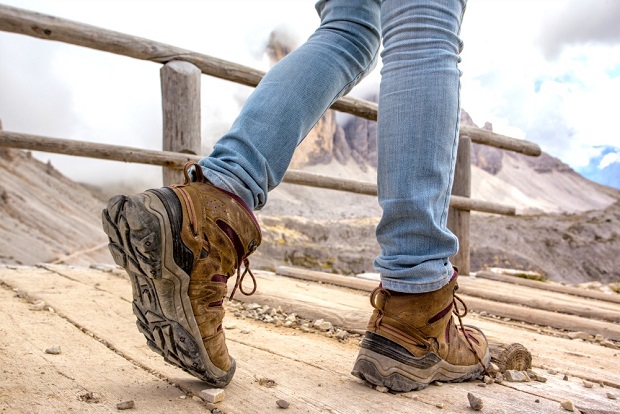
What to Wear for Hiking?
You can wear the same clothing you wear for other sports activities, but it can be more comfortable if you adjust the outwear to the conditions you’ll be hiking in. The clothes should fit you well and allow you to move, be comfy, practical and durable. It largely depends upon your individual needs and preferences, but try to keep the weight of your clothing as light as possible, especially for backpacking or long-distance walking.
Include at least one item in a bright colour in your walking outfit, which can be seen from front and back. Wearing all black is not always a good idea, especially not after dark. But even in the daytime, if you’re walking alongside a road, you need to be visible to approaching cars. You may be surprised, but you can find a variety of country wear in different colours and select what you prefer the most for your next outdoor adventure.
Depending on the climate in your area, dress in layers, so you can remove a layer as you warm up while walking and put it back on if you feel cool. Avoid too much clothing and start off feeling slightly cool, as eventually, you will heat up as you walk more. You can choose from a wide range of country wear suitable for hiking that can help you create a simple layering system, such as a technical fabric t-shirt, light jumper (preferably fleece), windproof vest and/or waterproof jacket.
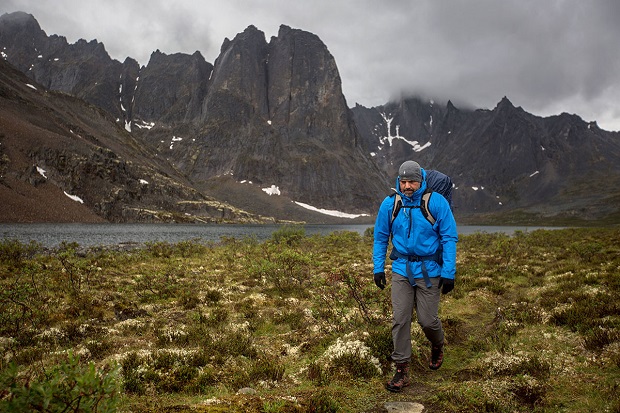
The base layer is one of the most important layers as it stays next to the skin and can transport perspiration away. Thin garments made of synthetic fabrics or bamboo are the best choice for a base layer as they’re comfortable and wick moisture quickly. If you walk really hard, any base layer will feel damp and cold, but with thin garments, the feeling shouldn’t last long. Avoid cotton, though, as it takes too long to dry.
The mid-layer can be a fleece jumper or a windproof jacket. Most windproof garments are water-resistant as well and can keep you safe in harsh weather conditions. When it comes to the outer shell garment, there are a few worthwhile features to consider. Ventilation is very important to allow the moisture through when you’re sweating and a couple of pockets can be quite helpful at times.

